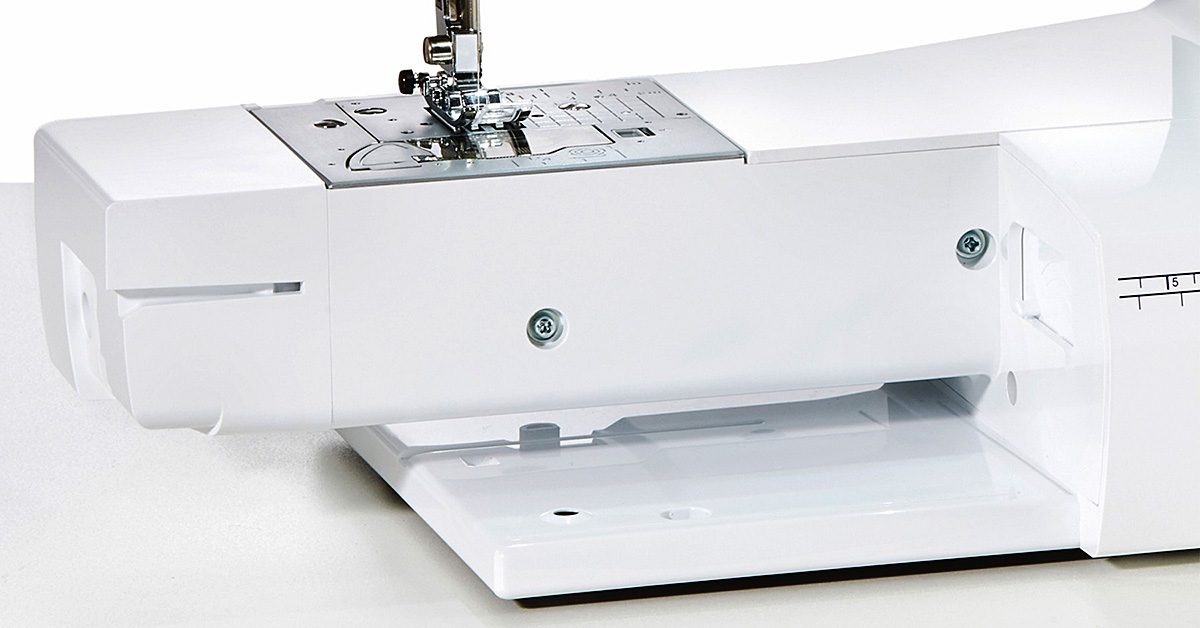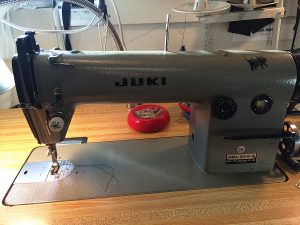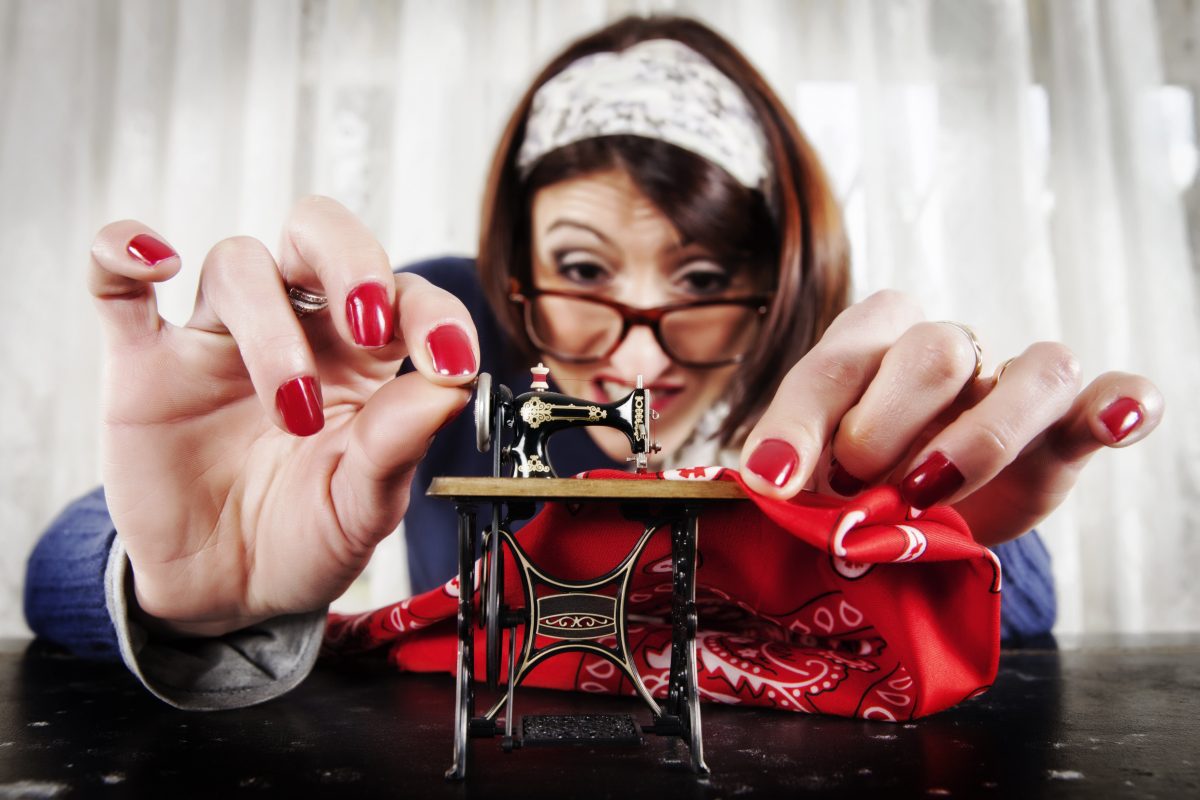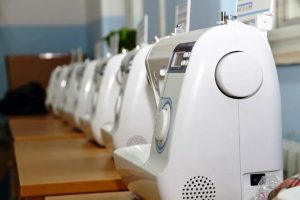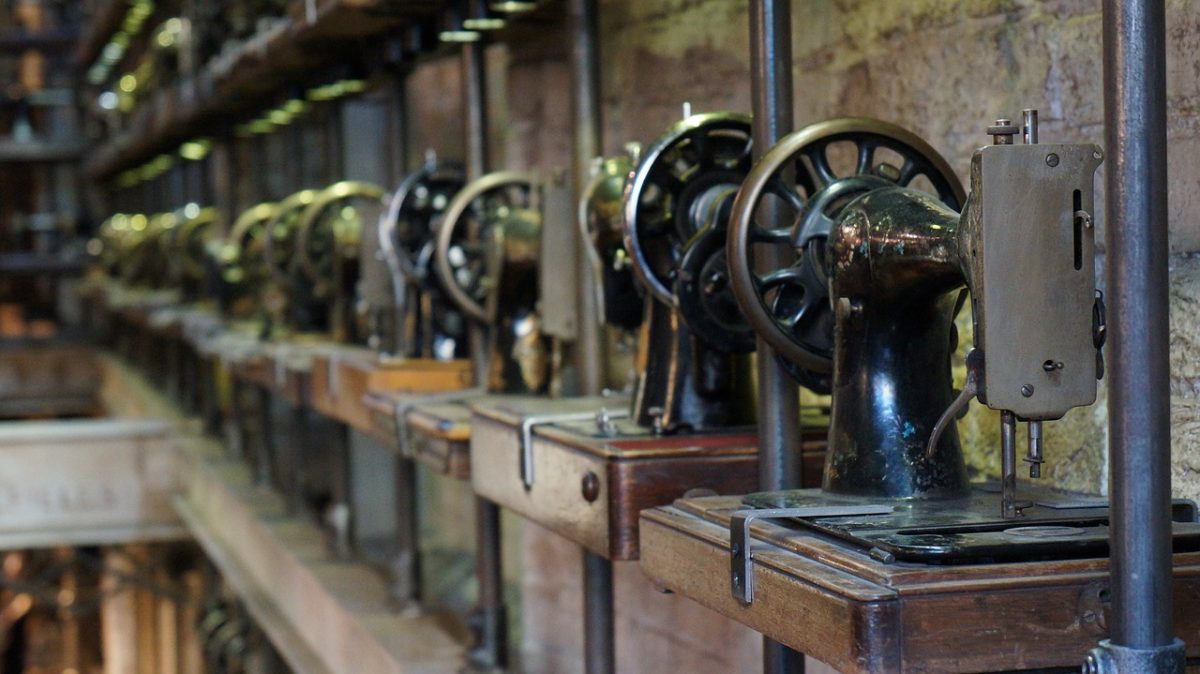I rarely use a free arm on a sewing machine, mainly because I sew most often on my industrial Juki straight stitch machine and it doesn’t have one. I sew sleeve and pant cuffs by either leaving the garment right side out and sewing with the wrong side to the top or vice versa (garment wrong side out and sewing with the right side to the top).
Most things are easily sewn this way. You basically put the needle and presser foot inside the pant leg or sleeve.
Something up my sleeve
This past week though, I needed to attach a nine and half inch sleeve extension to the top of a cuff – making a sweater look as if there was another layer underneath when in actuality there was only an extra sleeve poking out from the bottom.
I marked and pinned, tried going in from one way, then another but couldn’t get the needle to the right sewing position. The sleeve extension was too long and the existing cuff on the sweater I was attaching it too, far too bulky and heavy.
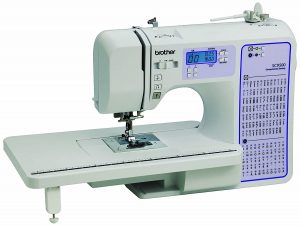
My little light weight Brother SC9500 was no help either as it doesn’t have a really skinny free arm.
My little light weight Brother SC9500 was no help either as it doesn’t have a really skinny free arm.
A sewing machine free arm is the narrow platform you’re usually left with if you remove the flat bed attachment on a domestic machine.
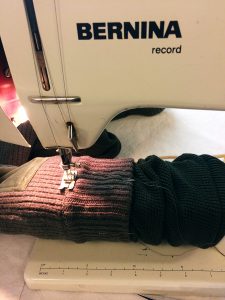
It’s a Bernina Record 830 which is, along with the Bernina 930, one of the best domestic ‘portable’ machines ever made.
After some struggling (and cursing), I remembered that my good old trusty heavy metal Bernina was under the cutting table. It’s a Bernina Record 830 which is, along with the Bernina 930, one of the best domestic ‘portable’ machines ever made.
Standing the test of time
The 830 was made in the 1970s and the 930 in the 1980s. Both machines are mechanical (no electronic ‘smart’ stitch settings) and will sew through pretty much anything. They’re also faster than most modern domestic machines. And the 830 has a nice skinny free arm.
The one thing it doesn’t have is extra ‘give’ in the presser foot – which allows you to get really big bulky things under it. In order to get my sweater cuff and extra sleeve under the foot I needed to exert a good amount of what my father always referred to as ‘elbow grease’.
But once under there, the old 830 happily sewed over all the lumpy bulk. Crisis averted.
Bernina reliability
Bernina is still making some great machines, many of them are electronic now.
But, if you ever see an 830 or a 930 at a garage sale, snatch it up. They make excellent all around machines and seem to be virtually indestructible. Mine has taken a dive off the tailgate of a wardrobe truck and it still works great (though I don’t necessarily recommend testing that theory).
My experience with the troublesome sweater reminded me that there is always a solution to a seemingly impossible task. Sometimes that solution only becomes clear after you’ve pretty much given up. I did indeed say out loud (to no one in particular as I’m pretty much always sewing alone in my little sunny corner) “I can’t get in there. I just can’t get in there.” Then, low and behold, I spotted the red plastic case that houses my Bernina and I knew everything was going to be ok.
This also reminds me of something I was told when I first started cycling up steep, long mountains. “Every climb has a gear. You just need to find it.” I wasn’t thoroughly convinced at first but, if history is to be believed, that is absolutely the case. I have yet to find a mountain I couldn’t climb.

